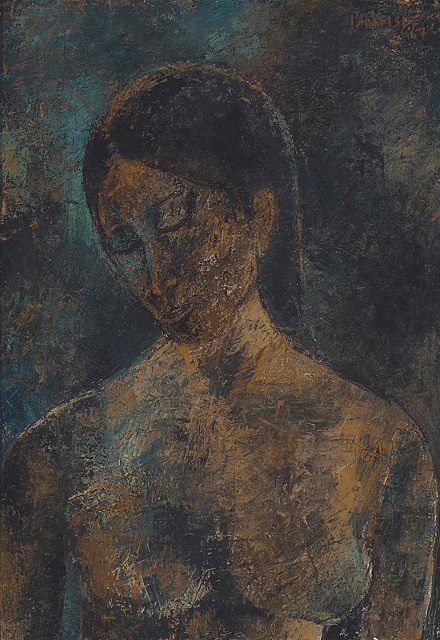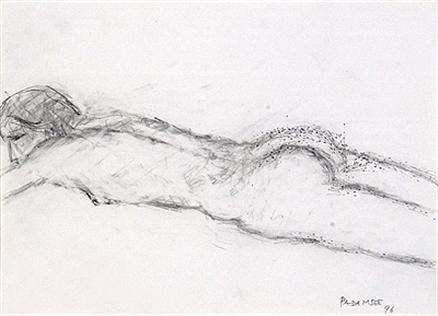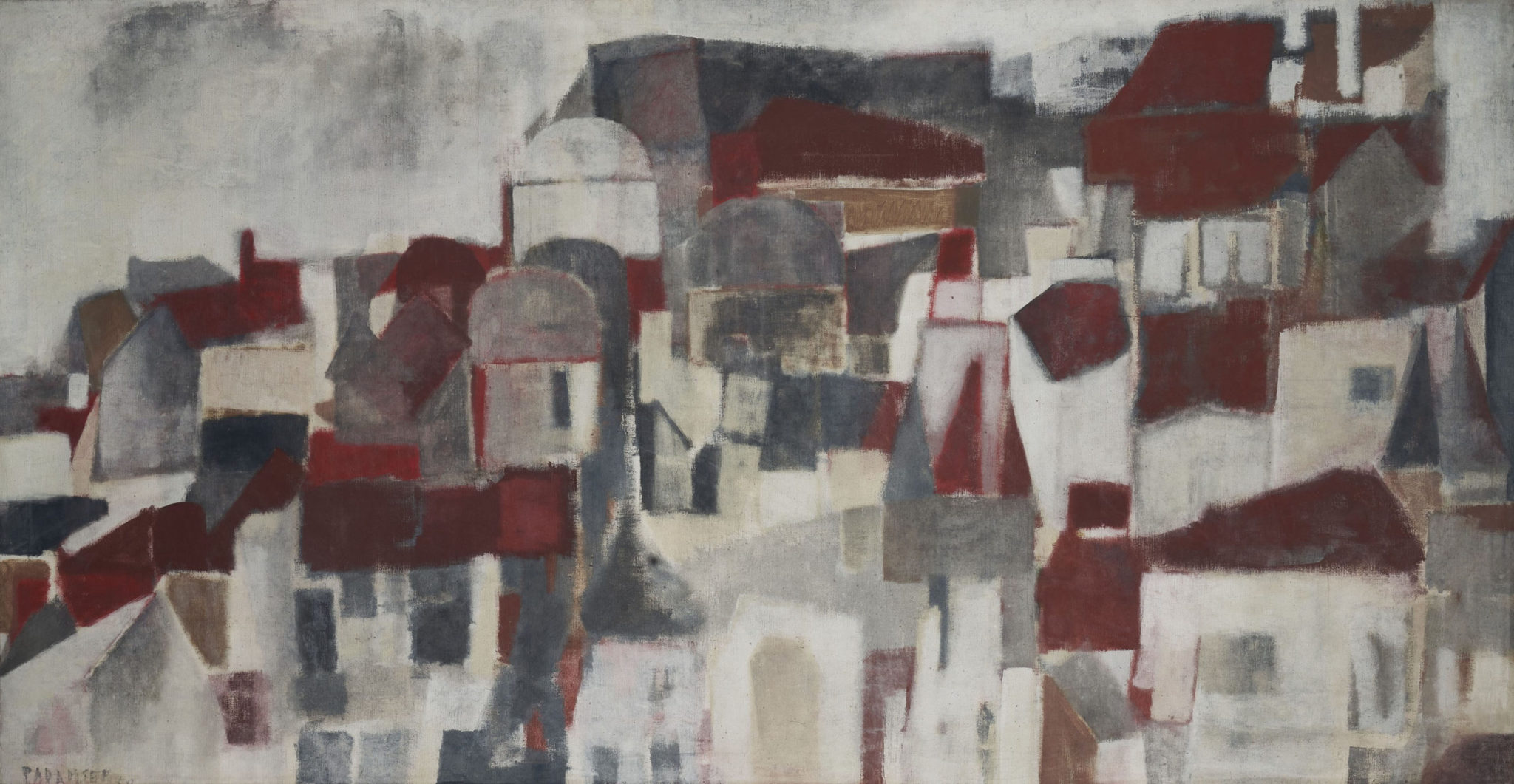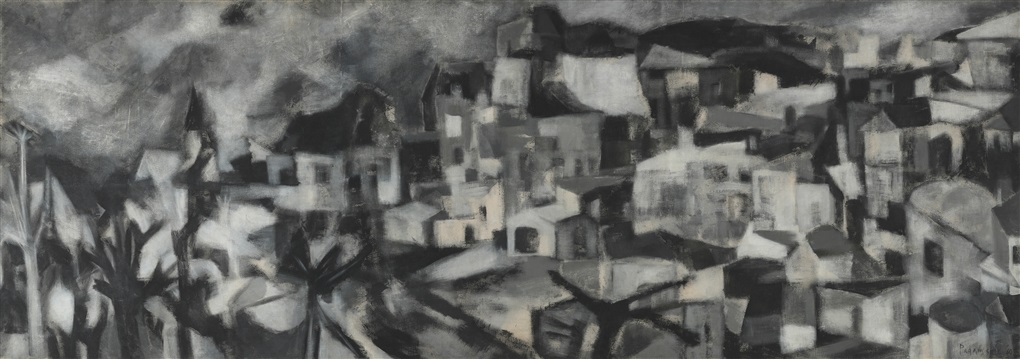Everything You Should Know About the Painter

Akbar Padamsee was a renowned Indian painter and artist. His mother Jenabhai Padamsee, who was a homemaker, gave birth to him on 12th April 1928. Hassan Padamsee, his father, was a well-to-do investor who owned ten buildings as well as a furniture and glassware business. His family members were traditional Khoja Muslims.
Family Background
The name Padamsee is derived from the word Padmashree and was earned by Akbar’s grandfather after he gave all his food to villagers during a famine. This was at a time when his grandfather was a headman at Vāghnagar village situated in Bhavnagar district. Initially, his family name was “Charanyas” since their ancestors were court poets.
Akbar Padamsee had seven siblings. Although they were rich, both his parents and his siblings had not acquired much education. Amongst his brothers was the famous actor Alyque Padamsee. Akbar and his brothers were among the first people to attend school, where they learned the English language. Afterward, their parents learned a few English words from their sons.
Akbar Padamsee Career Life
He started developing an interest in pictures when he was still young, and he would copy images from his father’s books and the then weekly magazine in his father’s store in south Mumbai. He went to school at St. Xavier’s High School where he met Shirsat, a watercolorist who became his first mentor.
He first learned watercolor painting and after that attended classes at Chami road as he prepared to study at Sir JJ School of Art. For that reason, he got a chance to enroll in the course straight during his third year. In 1947 when he was still in school pursuing fine art, the group Progressive Artists’ Group was formed. This is a group of modern artists that was built by M.F Husain, S.H Raza, and Francis Newton Souza. Akbar had already joined it by the time he completed his diploma. Ever since that time, the group has dramatically impacted Indian art.
Together with these three, he pioneered modern Indian painting. He has done various things ranging from watercolor, plastic emulsion, oil painting, printmaking, photography, computer graphics to sculpture. He also worked as a lithographer, photographer, engraver, sculptor, and filmmaker.
Achievements
In 1950 when Raza won a French government scholarship, he asked Padamsee to join him in Paris. In 1951 he left Mumbai for Paris where Krishna Reddy a former Indian sculptor, printmaker, and teacher, introduced him to his next mentor Stanley Hayter. Shortly after, Padamsee joined Hayter’s studio and had his first exhibition displayed in 1952. His exhibition was unnamed, and he was therefore forced to share the price awarded by Journal d’Arte, a French magazine, with Jean Carzou.
He held his first solo in 1954 at the Jehangir Art Gallery. Shortly after, he became one of the best artists. In 1962, he received the Lalit Kala Akademi which is an award given to great Indian artists for their achievements in visual arts. It is given by India’s National Academy of Art popularly known as Lalit Kala Akademi. In 1965, the University of Wisconsin Stout invited him to be an artist-in-residence. This is a program in which academicians, artists, and curators are invited to reside on the premises of an institution.
In 1967 he went back to India. At that time, he was a member of multiple committees and therefore participated in coming up with arts for the Bharat Bhawan museum situated in Bhopal, India. He also came up with Vision Exchange Workshop (VIEW). He organized critical cultural events and was honored numerous times. One of the distinctions he received was the Padma Shri in 2009.
Style of Akbar Padamsee
He personalized his work which made him quite outstanding. For example, his mirror images or Metascapes are things that he imagined in his head and drew in his endeavor for formal logic. He covered topics like heads, nudes, and landscapes and did portraits created in charcoal and pencil. The authenticity that is shown by his oil paintings is out of this world. The images are inspired by colored matter.
Besides his painted work, he has done black and white pictures where he used light to develop dimensions.
His Married Life
In 1954, Akbar Padamsee tied the knot with Solange Gounelle in Paris. However, in 1968, he moved to Mumbai, India where he lived with his wife, Bhanumati Padamsee.
Sale at the Sotheby’s
On 25th March 2011, ‘reclining nude’ one of his paintings was bought for $1,426,500 in New York at Sotheby’s.
Apart from Lalit Kala Akademi, he has received various other awards and honors which include Kalidas Samman, Jawaharlal Nehru Fellowship, Artist in Residence, and J.D. Rockefeller IIIrd Fund, Fellowship. He also had several publications as well as many exhibitions selected solos, and many other selected group exhibitions.
Akbar Padamsee Paintings
During his lifetime, Akbar did a lot of pictures. He dealt with topics like the landscape, nudes, townscape, among many others. Some of his famous paintings include:
1. Reclining Nude
This is one of his most valued paintings. The sale of this painting boosted his popularity.

2. Rooftops
This painting was done in 1959 after he returned from Paris for the second time. This was after he decided to do away with color from his palette and decided to stick to grey. During the year that followed, he did monochromatic work and that time was known as ‘Grey period’.

3. Greek Landscape
This painting broke the record after it was sold for Rs 19.19 crores doubling its upper estimation. This happened at the Saffronart’s evening sale. It became the most expensive painting ever sold by an Indian at an auction.

Death of the Doyen
Padamsee passed away on 6th January 2020. He died at 91 years due to prolonged illness. At the time, he was living with his wife at the Isha Yoga Ashram. He will be remembered for many things among them being pioneering modern Indian painting alongside M.F Husain, S.H Raza, and Francis Newton Souza. Akbar. People will also remember him for being relentless on his painting journey.
